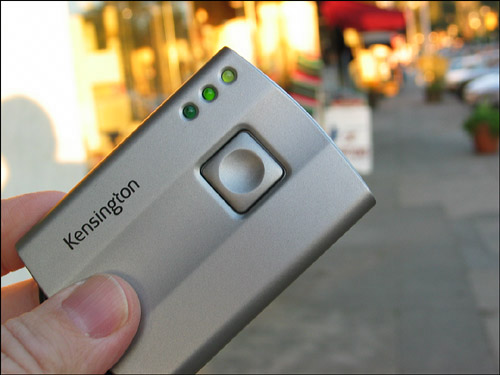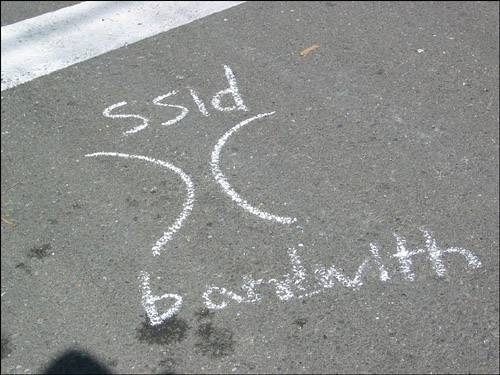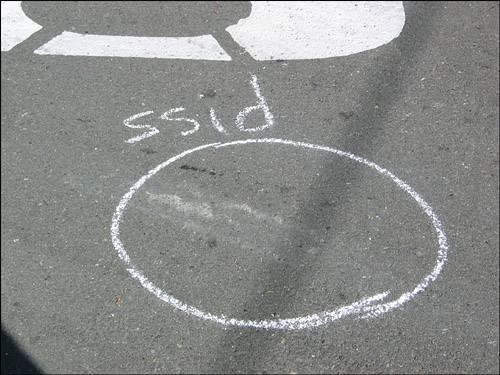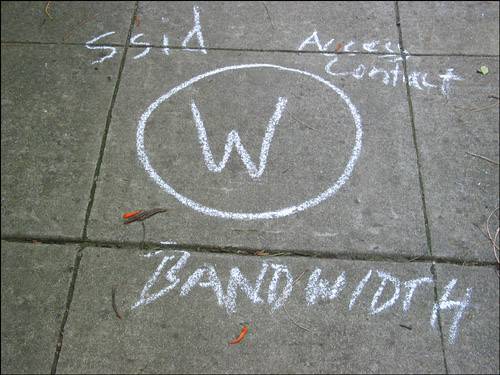Finding Free Hotspots
| I like getting my wireless networking access without having to pay for itand I'll bet you do, too. The good news is that free access is spreading like wildfire among commercial establishments. (I'm not talking about mooching wireless service from a neighbor with an unprotected access point.) This movement started when independent businesses, such as unaffiliated coffee shops, discovered that by offering free access they could successfully compete with big chains, such as Starbucks, where access was on a fee basis. Offering free access is also in keeping with the original spirit of wireless networking and the Internet, which is to make things as widely available to everyone as possible. Quite a number of business chains have also decided that providing free access makes business sense. (Some of these chains are listed in Appendix B.) For now, free wireless access models exists alongside the pay-for-wireless service model. We'll have to see which one (or both) survive in the long run. You can vote with your feet and patronize establishments that provide free access. One of the best ways to find free sites is to use the Wi-Fi-Freespot directory, http://www.wififreespot.com, shown in Figure 9.20, which provides a state-by-state listing of free hotspots. Figure 9.20. The Wi-Fi-Freespot directory provides a state-by-state listing of free wireless hotspots. Some of the other directoriessuch as WiFi411, which I described earlier in this chapterallow you to check a box that filters results so that only free hotspots are shown. So be aware that many of the search directories allow you to distinguish between free and for-pay wireless hotspots. You might want to be sure to use one of these if your credo is "I've paid and I've done it free, and I won't go back to paying anymore." The answer to the question of what is the difference between free wireless access and access that costs $30 a month is likely to be $30 a month. I've already mentioned that quite a few retail chains have taken to providing free access as a matter of policy (see Appendix B). You should also know that many local libraries offer free wireless access (check with your local public library). Finally, another interesting possibility is a college or university. These days, most campuses have a wireless infrastructure. Even if it is only intended for the use of students and faculty, it might be possible to arrange for guest access. To locate free hotspots, don't forget word of mouth, asking people, observation (the point of war chalking, which I'll describe in a little while), and searching for signals using your mobile computer or a Wi-Fi finder. Working with a Wi-Fi FinderOne approach to finding Wi-Fi hotspots is to use a Wi-Fi finder, a small, inexpensive device that has appeared on the market recently. The most commonly used Wi-Fi finder is the one from Kensington Technology Group, model number 33063. This tiny unit measures 2.7x3 inches, and is about 1/2 inch thick. It's simple to use the Wi-Fi finder. When you're out wandering, press the unit's button. If it detects an 802.11b or 802.11g Wi-Fi network, the green lights illuminate. The more green lights, the stronger the signal. If only the red light illuminates, there's no Wi-Fi network in the neighborhood. The Wi-Fi finder blocks out competing 2.4GHz signals from devices such as cordless phones and microwaves, so that when it shows a signal, you know it is from a Wi-Fi network. It has an effective range of about 200 feet out-of-doors. Note A Wi-Fi hotspot is termed open when it is not encrypted. This means that you do not have to supply an encryption key, which looks and acts like a password. An example of an open hotspot is the T-Mobile Hotspot hosts, which require an SSID but not an encryption key. (You also have to log on to the T-Mobile network with your T-Mobile user ID and password, but that's a different issue.) A Wi-Fi hotspot is closed when an encryption key is required to access the node. All private Wi-Fi networks should be run in closed mode. Wi-Fi encryption is accomplished using WEP (Wireless Equivalency Protocol), a security measure that is part of the 802.11 and Wi-Fi standards. So far, so good. But the fact of the matter is that you can't tell from the Wi-Fi finder what the SSID of the network is, who the network provider is, whether the hotspot is free or commercial, whether the network is open or closed, and if closed, who to contact for access. So a Wi-Fi finder is a fun and pretty cool thing to put on your keychain. (The Kensington model comes with a ring for attachment to a keychain.) But is it genuinely useful? That probably depends on the user, but you can definitely find me out cruising the neighborhood to see where the Wi-Fi is using my handy-dandy Wi-Fi finder (see Figure 9.21). Figure 9.21. The author is cruising for Wi-Fi in all the wrong places.
War Driving and War ChalkingWar driving is the hobby of popping in a car and cruising around with a Wi-Fiequipped laptop looking for open Wi-Fi nodes. War chalking is the act of using specific chalk markings, usually on a sidewalk, to identify Wi-Fi hotspots. Both activities show the extent to which Wi-Fi has come out of nothing as a disruptive technology, until fairly recently because of grassroots support and without the backing of major corporations. Although important companies such as Intel and others now back Wi-Fi, the "counterculture" roots of old-time Wi-Fi and 802.11 practitioners remain an important aspect of the social history of Wi-Fi. War driving is an activity that ranges from the fun, but harmless (that is, if you find this kind of thing fun) to malicious and felonious (theft of information such as credit card numbers and industrial spying). It's successful only because an astoundingly large number of corporations and others that deploy private Wi-Fi networks do not use even rudimentary protection such as encryption. It has been estimated that as many as 60% of the privately deployed Wi-Fi networks operate without encryption. Supposedly, war chalking is derived in part from the marks hobos made during the Great Depression. These hobo chalk markings would point out a place to get a free meal, a good place to sleep, and perhaps a particularly nasty railroad "bull." In war chalking, an open node (public hotspot) is indicated by two opposing half circles marked with the SSID and the bandwidth (see Figure 9.22). Figure 9.22. The war chalk marking for an open node.
A closed node (or private Wi-Fi network) is shown as a circle, along with its SSID, as in Figure 9.23. Figure 9.23. The war chalk marking for a closed node is a circle.
A Wi-Fi node protected by WEP encryption is shown as a circle with a letter W within it (see Figure 9.24). Ideally, the encrypted node is marked with SSID, bandwidth, and access contact. (The access contact can provide the encryption key if it is appropriate.) Figure 9.24. The war chalk marking for a WEP node.
The fact that war chalking has spread as a practice is a testament to the power of the Internet to spread social habits. It also speaks to the problem of finding Wi-Fi hotspots if you are not already online. In the future, it's likely that Wi-Fi hotspot information will become more ubiquitous. Perhaps the community welcome signs that now tell the time and place for Rotary Club meetings will soon come to also provide Wi-Fi hotspot information. When travelers visiting a community can find Wi-Fi hotspot information in this kind of way, war chalking will probably fade into history like the chalk marks made by the hobos of long ago.
|
EAN: N/A
Pages: 204
- Chapter III Two Models of Online Patronage: Why Do Consumers Shop on the Internet?
- Chapter VIII Personalization Systems and Their Deployment as Web Site Interface Design Decisions
- Chapter XI User Satisfaction with Web Portals: An Empirical Study
- Chapter XII Web Design and E-Commerce
- Chapter XVII Internet Markets and E-Loyalty



